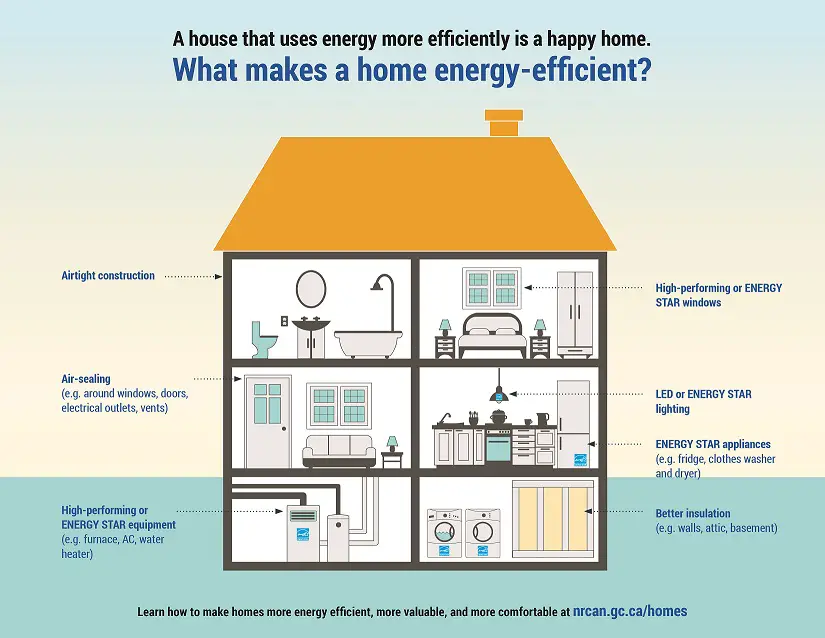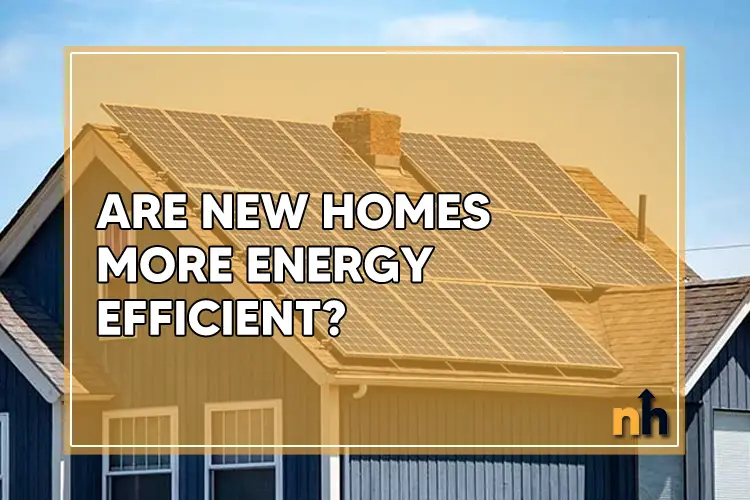So, are new homes more energy efficient? New homes are more energy efficient because they are built using energy-efficient doors and windows, better insulation, Energy Star appliances, and smart home heating and thermostats. With new advancements in technology, new homes are becoming more energy efficient.
Modern-day new build homes follow building standards that require a certain degree of energy efficiency. Additionally, door and window manufacturers are increasingly focused on making energy-efficient doors and windows.
In the years past, many home builders were not focused on energy-efficient builds. With an increase in demand for energy-efficient homes, many builders have changed the way they procure building materials. Today, most subdivisions are built to offer a high degree of energy savings.
Recommended Read: Where do Builders Buy Materials
If you’re purchasing a new construction home today – whether in Canada or the USA – your home is considered to be more energy efficient than older homes!
 Credit: Natural Resources Canada (Government of Canada)
Credit: Natural Resources Canada (Government of Canada)However, it doesn’t mean that an older home can’t be energy efficient. An existing older home can be upgraded in various areas to improve its efficiency. It all comes down to the upgrades in the home, coupled with the actions of the homeowner.
For example, a new construction home will have better windows and doors, which do a great job of keeping an air-tight seal. However, if the homeowner doesn’t properly lock up the windows in the winter months – it can cause an increase in the monthly heating costs.
There are a few things that can make a home more energy efficient:
- Good insulation
- Airtight construction
- Air-sealing
- Energy-efficient or Energy Star windows
- Energy Star appliances
- Energy Star HVAC and equipment
- LED lighting
- Solar panels
Table of Contents
Energy Efficient House Features
Good Insulation
A home with proper insulation will ensure that you save money on energy costs. Whether it’s spray foam insulation or traditional insulation – all areas of the home need to be insulation. These include basements, attics, and all walls. You can save a considerable amount of money on heating costs when you have good insulation. A new construction home will be well insulated if built by a reputable builder.
Airtight Construction
An airtight construction ensures that there are no gaps in the construction to allow for air to seep into the home. When installing doors and windows, the installers need to ensure there are no drafts – this is done by verifying it is an air-tight installation.
Air-sealing
Air-sealing is the process of sealing all air pockets and air leaks in your home. While building a new construction home, a builder may miss one or two things. With air sealing, you can prevent any future issues with the energy efficiency of a home. There are professional air sealing companies that can provide you with a quote after your home is built.
A home with air leaks can be dramatically expensive on the energy front, if not corrected within the first few months.
Energy Star Windows and Doors
Nowadays, there are many manufacturers who are improving the energy efficiency of their products. A new construction home with Energy Star windows and doors will generally be considered to be more energy-efficient.
These windows have better framing and sealing and double panes – providing added efficiency. If you’re building a new construction home, you can ask your builder about the windows and doors being used for your build.
Energy Star Appliances
Your appliances have energy ratings and those identified by Energy Star indicate that they are more energy efficient in comparison to those that do not have that rating. In your home, your stove, dryer, washing machine, and dishwasher can be high consumers of energy. Nowadays, these appliances are cheaper and easily available from major department stores.
Energy Star HVAC and Equipment
The heating, ventilation, and air conditioning system in your home also comes with an energy rating. When this equipment is rated Energy Star, you are adding to the energy efficiency of your home. Existing homes could also be upgraded with this equipment to become more efficient.
LED Lighting
LED lighting and energy-efficient lighting are very much effective and becoming common household items. Whether you’re lighting up a bedroom or your basement – you can now buy energy-efficient light bulbs for the home. These are low-watt bulbs using less energy than the old 60W bulbs we used to have several years ago.
If you currently use old bulbs, you can easily upgrade them as they burn out.
Solar Panels
An increasing number of new construction homes are now using the technology behind solar panels to power their home. The benefits outweigh the expense of installing solar panels – but it’s a long-term initiative. Today, solar panels are becoming a popular source of energy for new homes.
We hope Governments will soon bring incentives to builders who build new homes with solar panels.
To learn more about solar panels in new construction, we recommend reading our extensive post on this topic.
Smart Thermostats
A smart thermostat like Ecobee or Nest can be a great addition to the home, as it regulates the heating in the home. A smart thermostat can help save heating costs for a new or existing home.
Lastly, it’s important to remember that the homeowner plays a huge role in maintaining an energy-efficient home. For example, you can upgrade several items in the home for long-term savings. Additionally, we also recommend staying knowledgeable on standby power consumption.
While turned off, your appliances and equipment still use some level of power to run timers, and back-end applications and to stay connected to a network. It is estimated that standby consumption uses about 5-10% of your annual energy consumption.
